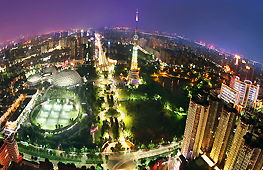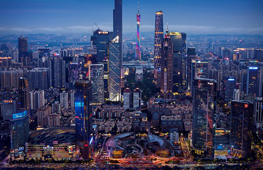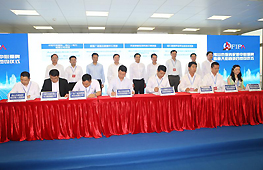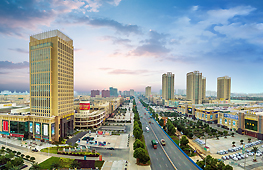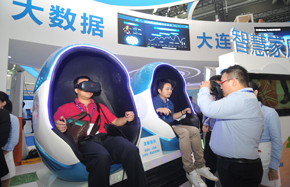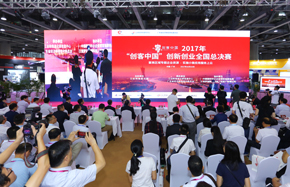Manuel Becerra: A weekend of Qingming traditions in Tongxiang
Working for the travel industry can be an amazing life journey. As a Product Manager for an inbound Chinese travel agency in Beijing, I promote and market Chinese destinations, learn about the history and culture of my host country, and experience the real China.
When I received the warm invitation from China Daily newspaper to join a "Discover Tongxiang" weekend tour, I didn't hesitate for a minute to accept. Tongxiang is a city located in Zhejiang Province, in the center of geographical triangle formed by Shanghai, Hangzhou and Suzhou. The area is world famous for the water town of Wuzhen, so I was really curious about what else the area could offer, and I was not disappointed.
On Friday afternoon I met all my future adventure colleagues at Beijing South Train Station, all China-based foreigners from different countries around the world. We headed towards Tongxiang by high speed train, and we spent our first night there.
I woke up on Saturday morning and the first thing I did was to check WeChat, where an amazing picture of traditional village house with a greenish vegetable garden popped up on our "Discover Tongxiang" group. I opened my window and there it was, a typical image of rural China that I love so much. The day started off good!
After breakfast we were driven to Baquan Village, where they were celebrating the Qingming festival, also known as Tomb-Sweeping Day. Hundreds of people were gathering around a stage where a show was about to start. I guess the image for the villagers were pretty amazing as well as they looked happily surprised to see a bunch of foreigners in their home town enjoying their festivity. Different groups of locals climbed onto the stage and performed different shows like calligraphy painting and traditional dances. I especially liked the two dragon dances as the experienced dancers made me think those dragons were alive!
We then ate amazingly delicious food at a local home that had also prepared a table where we learned how to make zongzi. Zongzi is a traditional Qingming festival delicacy made of glutinous rice, stuffed with sweet red bean paste, and wrapped in bamboo leaves. Despite the impressive patience of our chef, my different attempts of making zongzi resulted in failure because the rice was doing its best to escape through the bamboo leaves. Never mind, the experience was great and the pictures of my creations will never see the light.
Then we stroll around the village and met some locals that showed us some secrets about the silk industry. Some villagers were creating kind of thorn spirals by twisting and spinning dry weed. These thorn spirals were apparently attractive to silk worms to make their cocoons. Then some ladies showed us how to extract the worm out of the cocoon, how to stretch the cocoon to create small silk threads, and finally how to make silk quilts out of them. When I tried to stretch the cocoon myself, I realized how hard it was, and how badly I need to go to the gym. The lady was stretching it as it was gum, while I was unable to do just a bit. I performed better on the quilt-making activity, so I didn't "lose more face" for the day.
The tour ended with a visit to a modern library and a walk around the Tongxiang man-made lake where we had lots of fun joking about how we could improve the fauna of the area. After watching some hippo statues near the lake, we suggested our guide to introduce live hippos and water buffalos on the lake, but they say that would not work. What a pity.
The second and last day of our trip started by visiting Taoyuan village. We dressed up with Hanfu, historical clothing stemming from the Han Dynasty and we took amazing pictures surrounded by plum blossom trees. The clothes were clean and new, and they really suited us. The weekend before I went to Yuyuantan Park in Beijing, I went to enjoy the blossoms and I also saw many Chinese wearing these same exact suits while snapping pictures with the blossom trees. It really warms my heart to see how the young Chinese generations are recovering the traditions of wearing traditional clothes during festivities, as they do in other countries like Japan, South Korea or even mine, Spain.
In Taoyuan village we participated in more activities, like kite making and bamboo weaving. This time I was determined to do a good job, so I focused on making the best boat out of bamboo the world has ever seen. I managed to make a pretty decent bamboo boat in around 15 minutes but it couldn't stand still and it was tilting to one side. A teacher helped me to correct the balance, and now my piece of art is on display in my room to amaze all my visitors.
After lunch we visited a family oriented resort called Wucun, just next to the Grand Canal, the longest as well as the oldest canal in the world that is still in use that connects Beijing with Hanzghou. We also visited a modern art museum with really impressive pieces of modern art that could have been displayed in the Tate Modern of London.
Lastly, we visited the famous town of Wuzhen, which is the best water town I've seen in China so far. The water of the channels was impeccable, the houses architecture was perfectly maintained, and the lighting in the night was subtle and elegant. Although no locals live in Wuzhen anymore, I was pleasantly surprised how many streets were not all souvenir shop oriented like in other Chinese towns. Many streets alternated businesses with simply "walls", giving a strongly impression of authenticity and not a tourist park. Also the businesses were not selling the same products one after the other, which I really appreciated. We walked the whole town from one corner to the other, and in the night we took a boat back to the main entrance. It was marvelous.
On my way back to Beijing the next day, I checked all the pictures I made and realized how impressive each corner of China can be. After 6 years here, I can see how the tourism industry trend is evolving into something better. The respect and protection of the culture and original heritage sites is improving, the general cleanliness of the attractions has very high standards, and the attitude and courtesy of the people is spreading. There are lots of opportunities for the Chinese travel industry, and I hope I can be a first hand witness to them.
Author:
Manuel Becerra, a Spaniard who came to China in 2012, graduated from the University of Bournemouth majoring in Tourism Management. He has worked in many international travel agencies in countries like Spain, Belgium, France, and Mexico. He has traveled to more than 50 countries and regions in the world, and, since arriving in China, has also traveled to many provinces and cities in the country. He is now working for Varitrip, an online tourism company that aims to encourage more foreign tourists to travel to China. He is also very interested in Chinese traditional culture and hopes that he can take this opportunity to introduce China, his home for seven years, to more foreigners.






